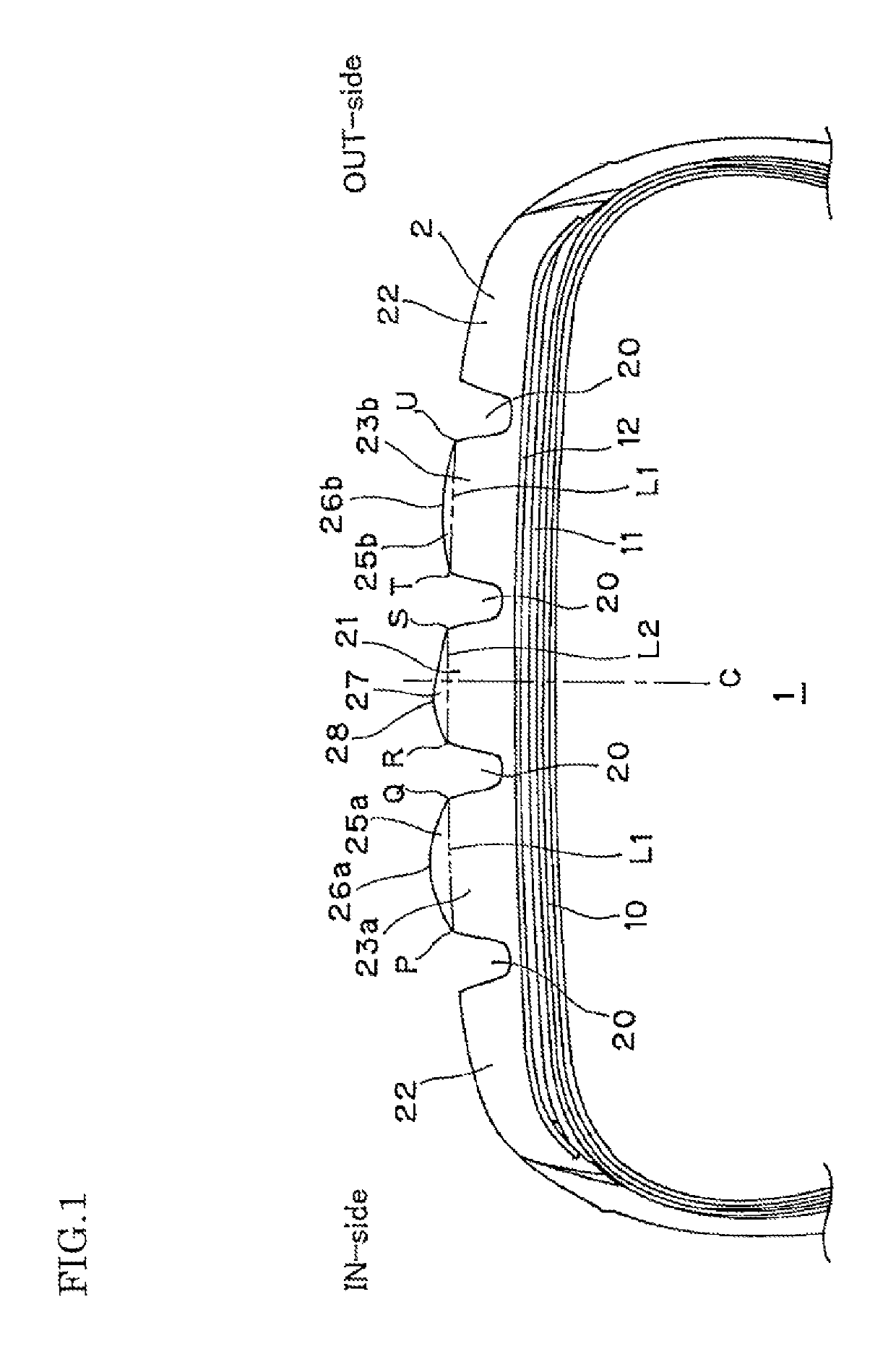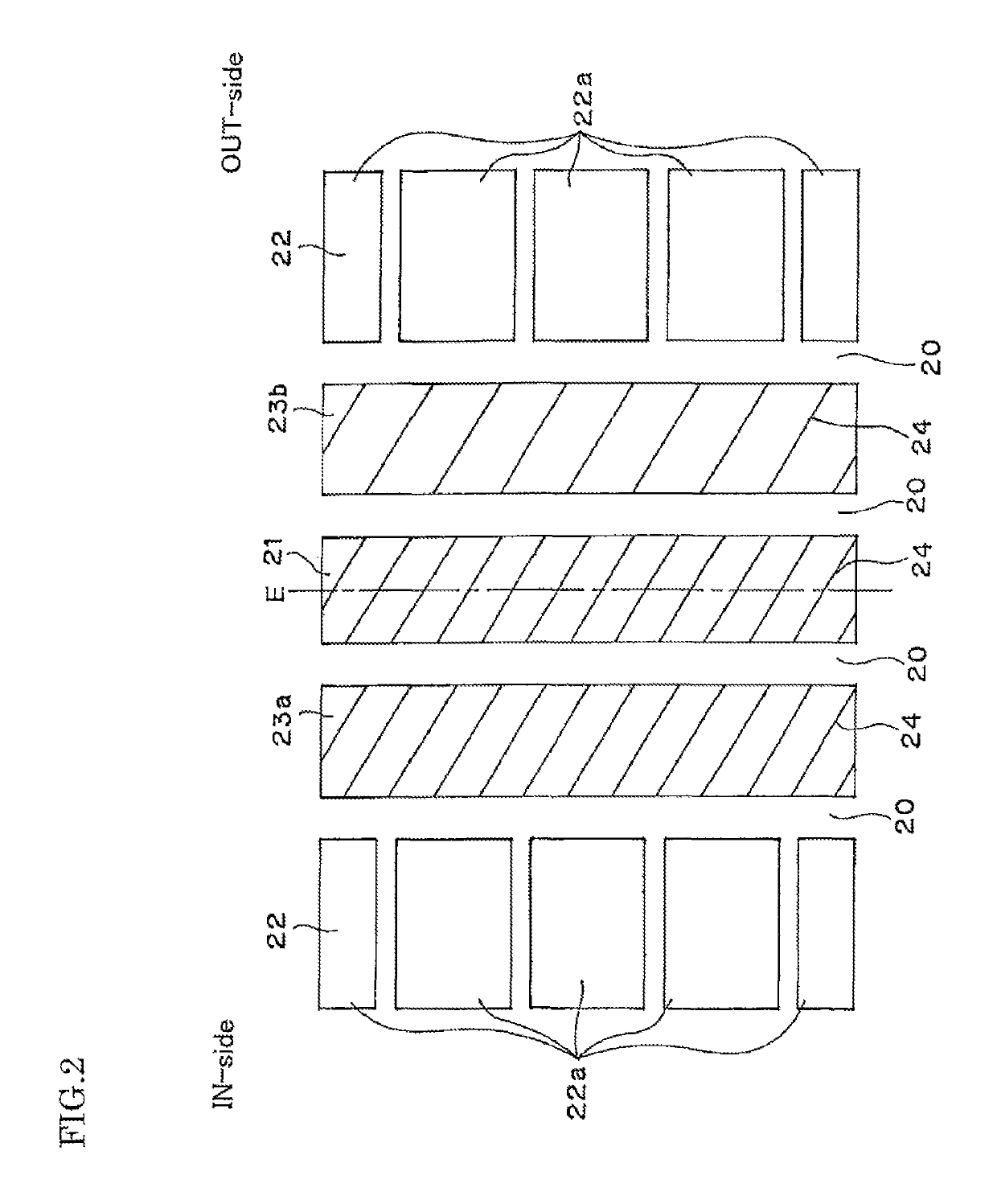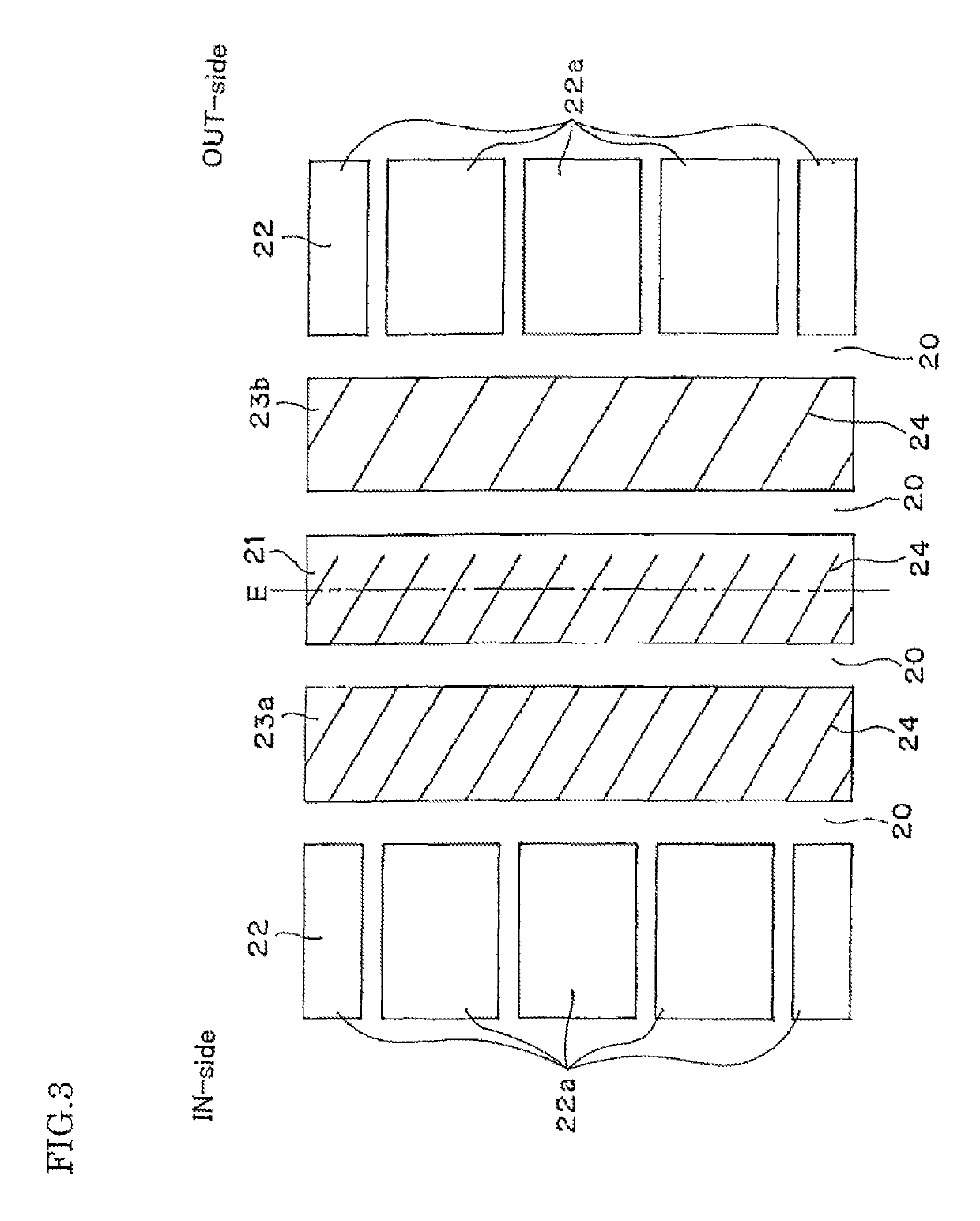Pneumatic tire
a pneumatic tire and tire technology, applied in the field of pneumatic tires, can solve the problems of tire not acquiring good steering stability on dry road surfaces, tire not acquiring good steering stability on snow, etc., and achieve the effects of excellent steering stability, large rigidity, and excellent steering stability
- Summary
- Abstract
- Description
- Claims
- Application Information
AI Technical Summary
Benefits of technology
Problems solved by technology
Method used
Image
Examples
example
[0032]The performances of pneumatic tires of comparative examples and pneumatic tires of examples shown in Table 1 are evaluated. In all pneumatic tires, the land portions are formed in a rib shape. The sipe densities in Table 1 are respectively expressed by an index when the sipe density in the comparative example 3 is set to 1, and the larger the index, the larger the sipe density becomes.
[0033]The pneumatic tire of the example 1 is a pneumatic tire where the sipe density of an IN-side mediate land portion and projecting amount of the IN-side mediate land portion projecting outwardly in the tire radial direction are larger than the sipe density of an OUT-side mediate land portion and a projecting amount of the OUT-side mediate land portion projecting outwardly in the tire radial direction. Further, the pneumatic tire of the example 2 is a pneumatic tire where a center rib projects outwardly in the tire radial direction, and a projecting amount of the center rib is smaller than a p...
PUM
 Login to View More
Login to View More Abstract
Description
Claims
Application Information
 Login to View More
Login to View More - R&D
- Intellectual Property
- Life Sciences
- Materials
- Tech Scout
- Unparalleled Data Quality
- Higher Quality Content
- 60% Fewer Hallucinations
Browse by: Latest US Patents, China's latest patents, Technical Efficacy Thesaurus, Application Domain, Technology Topic, Popular Technical Reports.
© 2025 PatSnap. All rights reserved.Legal|Privacy policy|Modern Slavery Act Transparency Statement|Sitemap|About US| Contact US: help@patsnap.com



